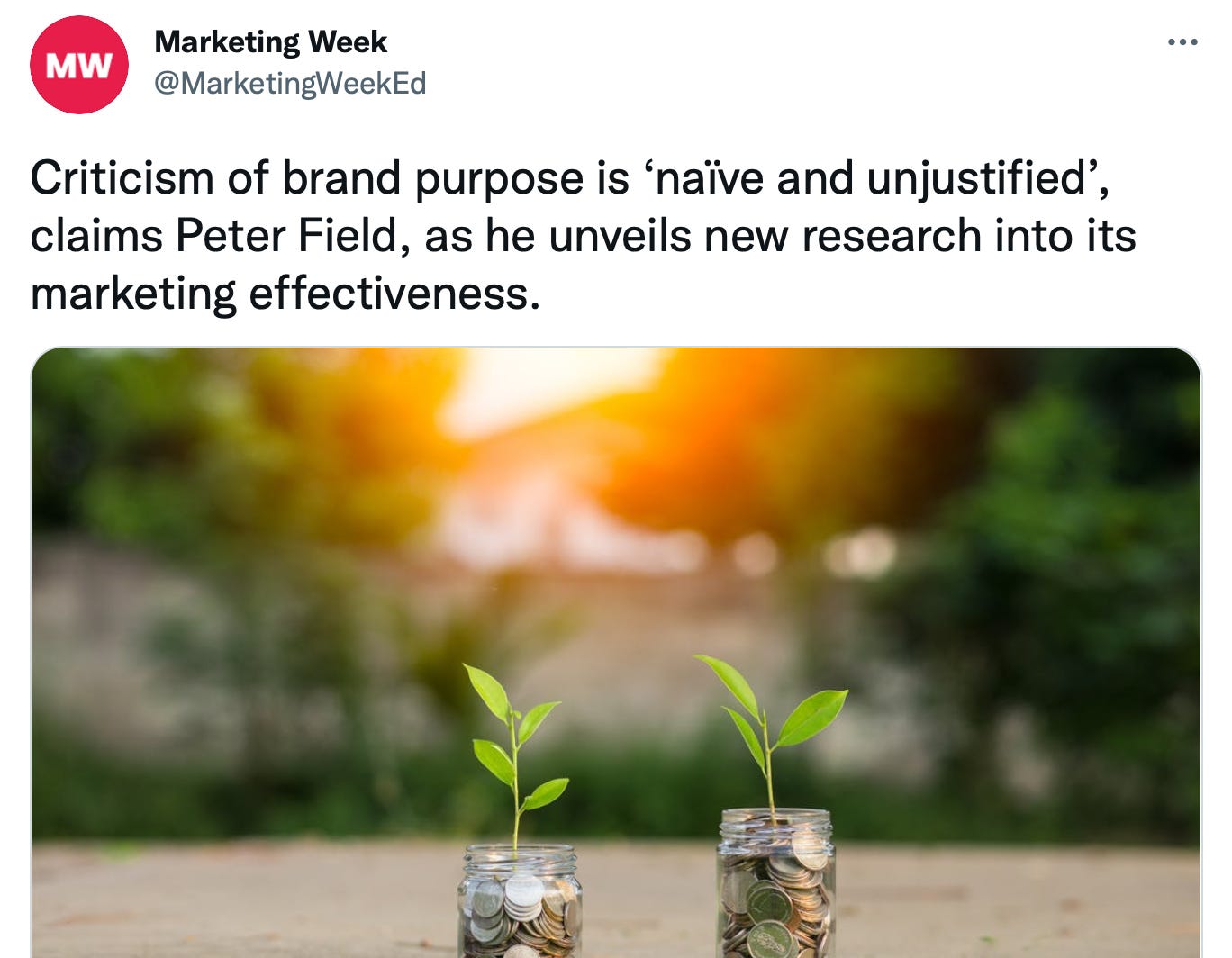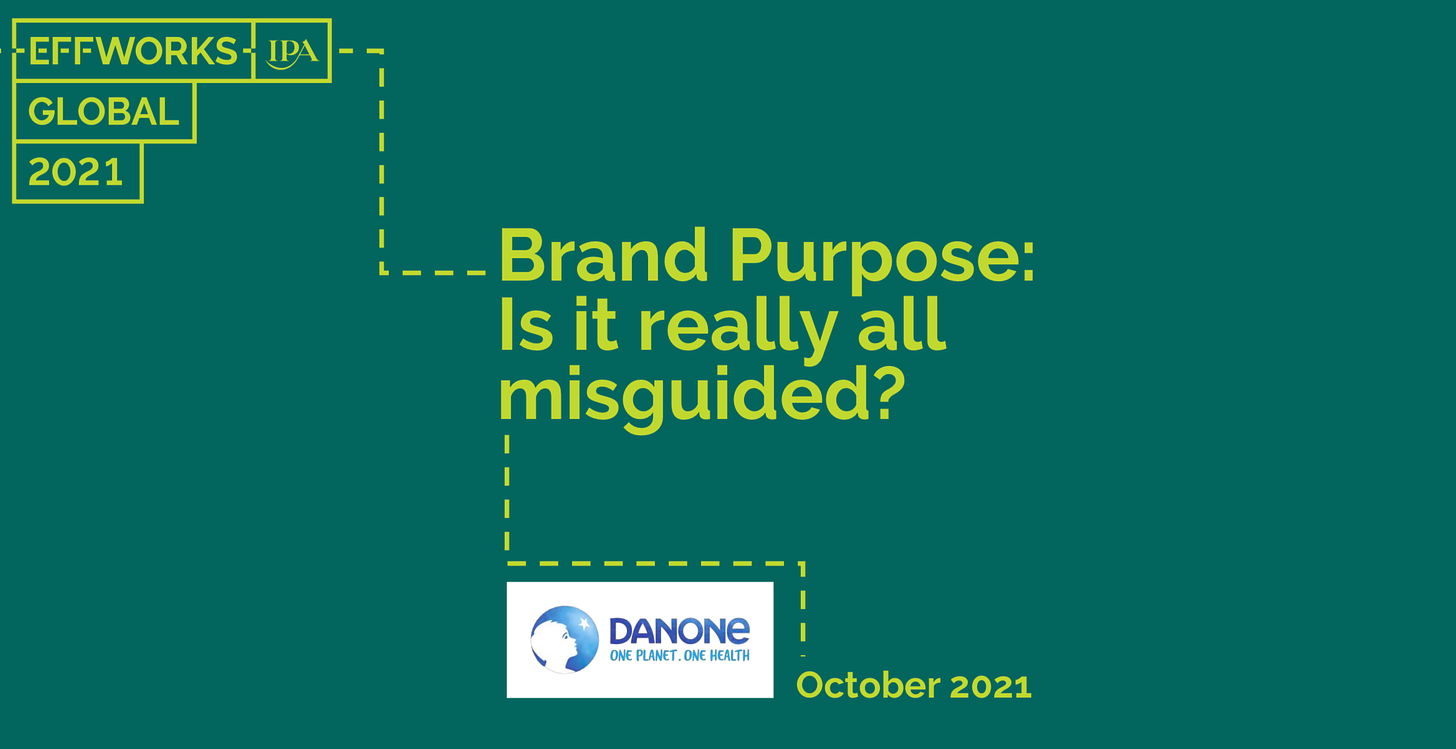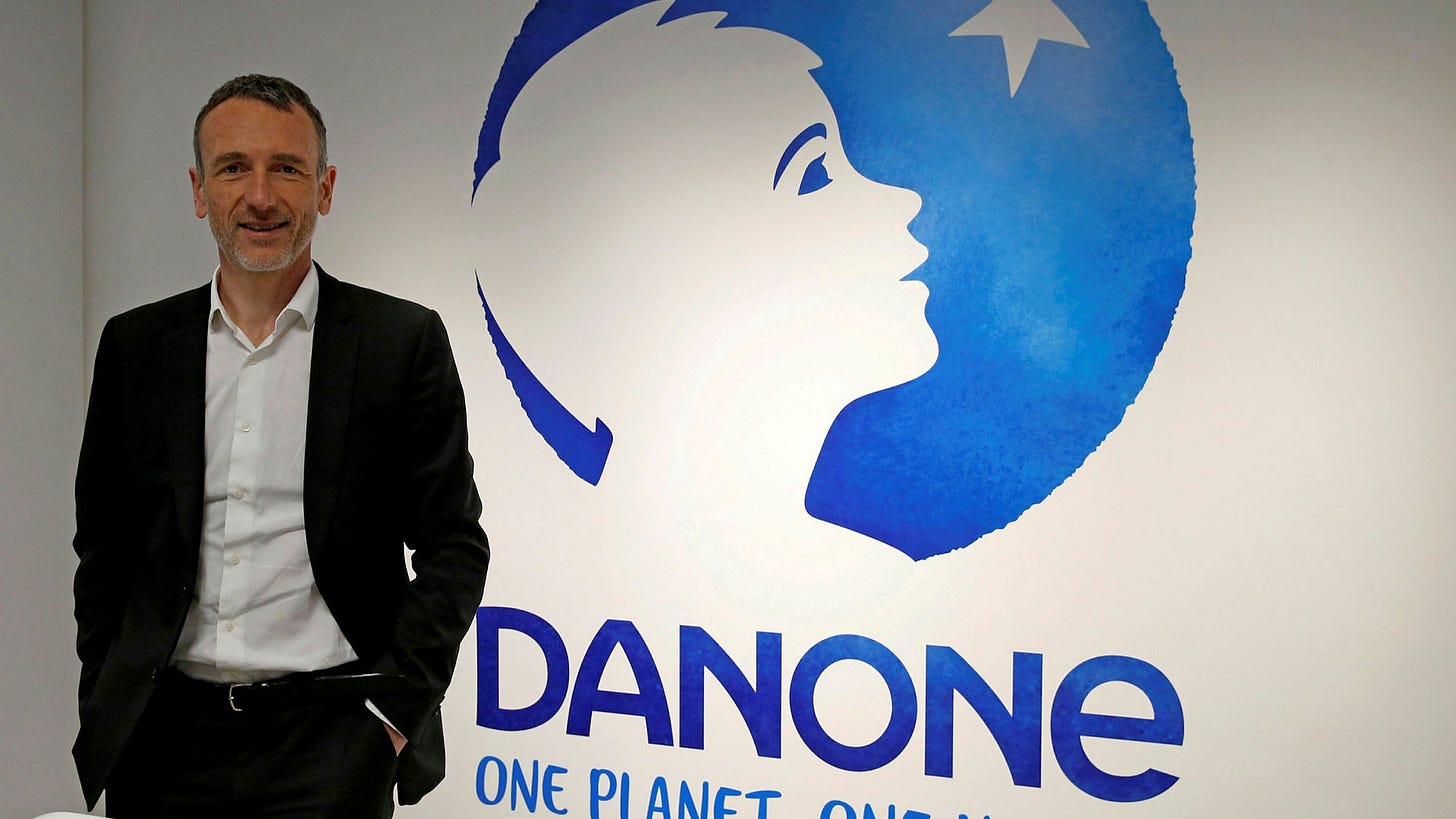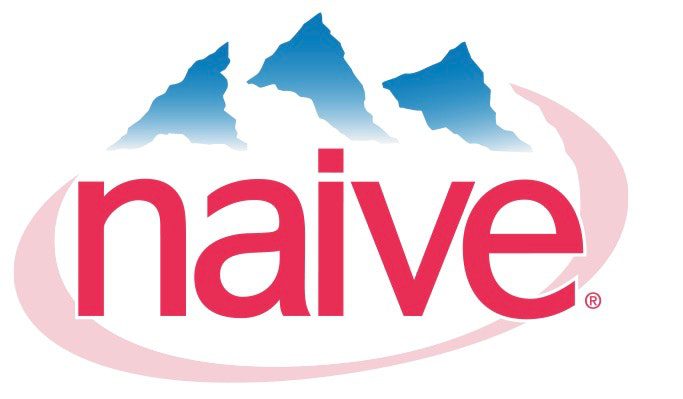On the latest twist in the Purpose story – and why everyone ignored the most interesting thing about it.
Hello again. For anyone new here, I’m a writer of poetry, downbeat diaries, branding and advertising projects, articles for Creative Review and The Guardian, and books about design. Thoughts on Writing uses language as a way into wider cultural and political issues. This post is a gear change from the last one, to which I had a lovely response – thanks for all the comments.
1. I know, but keep reading
So first of all – yes, this is another post about ‘purpose’, the trend that has swept the corporate and advertising world over the past decade. What follows will make more sense in the context of two earlier posts: Purpose wins. Who loses? and (especially) The reality distortion field.
I wasn’t intending to return to this subject so soon, but it comes off the back of an adland story that is too good to resist, because it sums up so much of what is dysfunctional about this debate.
2. The research
 Earlier this month, researcher Peter Field unveiled his latest brand purpose research at EffWorks Global 2021. The research was based on the IPA’s effectiveness databank, from which Field picked 47 purpose campaigns and 333 non-purpose campaigns. (We’re given no insight into how a campaign is judged to be purpose-led or otherwise – Bisto and Skittles are named among the purpose contenders, but not everyone would sign up to them being truly purpose-led.)
Earlier this month, researcher Peter Field unveiled his latest brand purpose research at EffWorks Global 2021. The research was based on the IPA’s effectiveness databank, from which Field picked 47 purpose campaigns and 333 non-purpose campaigns. (We’re given no insight into how a campaign is judged to be purpose-led or otherwise – Bisto and Skittles are named among the purpose contenders, but not everyone would sign up to them being truly purpose-led.)Field goes on to compare the relative performance of each group against six business metrics. As with all advertising research, you have to question the extent to which it’s even possible to isolate the effectiveness of one campaign on any particular business outcome. But caveats aside, the results are stark: purpose is less effective than the alternative. On average, non-purpose campaigns generate 1.6 ‘very large’ business effects, while purpose campaigns generate only 1.1. The difference of 45% is larger than even purpose sceptics might have expected.
At this point, Field makes a move that he admits might be seen as an ‘analytical trick’. Rather than accepting an underwhelming conclusion, he decides to filter out the ‘weaker’ purpose campaigns, leaving only the 26 or 27 best-performing cases (the exact number is unclear, but it’s a statistically small sample either way). Even more strangely, rather than comparing these strong cases against a proportional sample of the strongest non-purpose cases, he compares his best picks against the entire non-purpose team: 27 versus 333.
In his presentation, he admits that ‘purists’ will be horrified by this move, as it is ‘sampling on the dependent variable’. But he offers a justification in two parts. Firstly, he argues that non-purpose campaigns have had ‘100 years’ to refine their approaches, whereas brand purpose campaigns are just learning the ropes (an argument that implies non-purpose advertising has been one coherent school of thought for decades, overlooks how most purpose campaigns are building off those same decades of non-purpose work, and fails to take into account the upside of ‘novelty value’ that might give purpose campaigns a short-term boost). Secondly, he contends that his strongest purpose cases are so different from the weaker ones that they deserve to be treated separately (a circular-sounding claim that is impossible to substantiate without access to all the cases).
Eventually, the result is flipped: the best purpose campaigns generate 2.1 ‘very large’ business effects compared to the 1.6 achieved by all non-purpose campaigns. And this secondary finding becomes the framing of the whole report. Criticism of brand purpose is ‘naïve and unjustified’ says the Marketing Week headline. Purpose campaigns drive customer acquisition and market share says the Drum headline. Field himself frames his results as a riposte to the ‘vitriol’ of purpose sceptics, although there is a sense of protesting too much. His presentation uses words such as ‘fatwah’, ‘hatred’ and ‘knee-capping’ to characterise the other side, but the main response I’ve seen has been a fairly restrained critique of his methodology, couched in respect for his track record as a whole.
3. The response
As you might expect, the response was split along party lines. Purpose sceptics were quick to point out the flaws in the methodology. Purpose advocates chalked up a new data point that will be cited as an authoritative source for years to come. The marketing press reported on the ding-dong and the circus moved on.
Nowhere in all this did anyone raise a central question – who funded the research? In any other field, it would be considered a matter of basic hygiene to enquire after the backer of any new research, especially when it relies on such unconventional methods.
 The name Danone was mentioned by neither Marketing Week, The Drum or even the IPA in its own write-up. I only spotted it because of the credit on the title slide of Field’s presentation (above), and the point in his speech where he says he is ‘deeply grateful to Danone for funding the work that we have done’. (To be clear, they are a funder of this specific research, not the EffWorks conference as a whole.)
The name Danone was mentioned by neither Marketing Week, The Drum or even the IPA in its own write-up. I only spotted it because of the credit on the title slide of Field’s presentation (above), and the point in his speech where he says he is ‘deeply grateful to Danone for funding the work that we have done’. (To be clear, they are a funder of this specific research, not the EffWorks conference as a whole.)Of course, you might expect pro-purpose research to be funded by a pro-purpose client. Much as we’d like research to be independent and rigorously objective, there is usually an interested party involved. So I wouldn’t consider it much of a revelation if the funder was a vaguely pro-purpose business.
But for anyone who has the slightest curiosity about the wider purpose debate, the involvement of Danone should be an enormous tell. No business has lashed itself so tightly to the mast of brand purpose – and it has just emerged from a year so turbulent that it could be the subject of a decent Netflix series. Whether you’re a purpose advocate or sceptic, the context is crucial to understanding the research and its implications. And it happens to make for a much more interesting story, elevating an internal adland spat into a fascinating new chapter in a decades-old corporate tale.
4. From naïve to Evian
Readers of my last post on this topic may remember Milton Friedman, the economist whose 1970 New York Times article became a touchstone for the ‘businesses should just focus on profits’ way of thinking. (The actual argument was subtler than that, but this is how it was received.)
At the time, there was one business that positioned itself in explicit opposition to the Friedman doctrine – and it happened to be Danone.
In 1972, the company’s founder Antoine Riboud made a widely reported speech to French industry leaders, in which he declared that “corporate responsibility doesn’t end at the factory gate or the company door”. Instead, he called on them to place “industry at the service of people”. That ethos has been a core differentiator for Danone ever since, influencing brands such as Evian, Volvic, Activia and Danone yoghurt. (I am indebted to writer Tim Rich, whose variation on Danone’s ‘Mmm Danone’ jingle became the headline for this post.)
 This commitment to stakeholder capitalism has long been central to Danone’s business, but it took a new CEO to activate that message for the purpose decade. In 2014, ex-investment banker Emmanuel Faber (pictured) joined Danone and became one of a new generation of ‘activist CEOs’. Among his innovations was the introduction of ‘carbon-adjusted earnings per share’ in the company’s investor reports, which effectively put a voluntary price on carbon, without amounting to an actual legal obligation.
This commitment to stakeholder capitalism has long been central to Danone’s business, but it took a new CEO to activate that message for the purpose decade. In 2014, ex-investment banker Emmanuel Faber (pictured) joined Danone and became one of a new generation of ‘activist CEOs’. Among his innovations was the introduction of ‘carbon-adjusted earnings per share’ in the company’s investor reports, which effectively put a voluntary price on carbon, without amounting to an actual legal obligation.His greatest triumph came in 2020, when he persuaded shareholders to adopt a new legal framework that would write purpose into Danone’s corporate bylaws – turning it into an enterprise à mission with legal obligations to deliver on its social mission alongside its shareholder objectives. Following a 99.4% vote in favour, he gave a speech that would make for a great season opener in the Netflix series. The key line, delivered 50 years after the seminal New York Times article: “You have toppled the statue of Milton Friedman here today!”
5. The fall after the pride…



